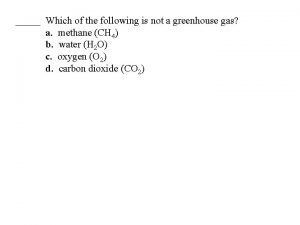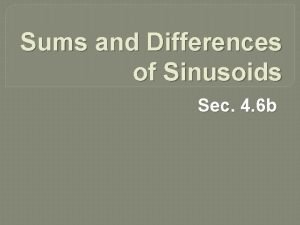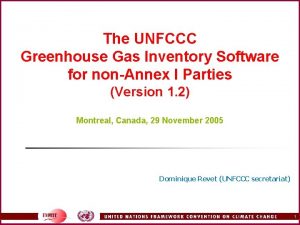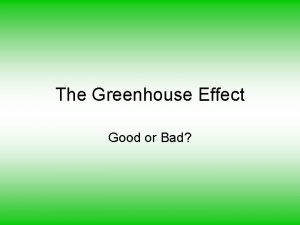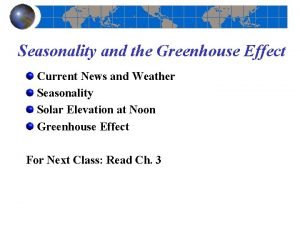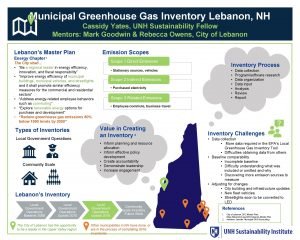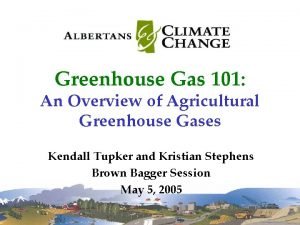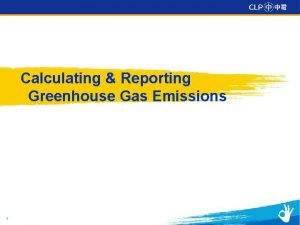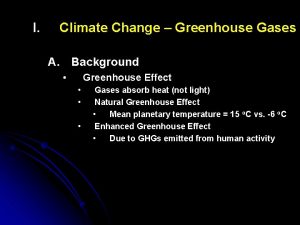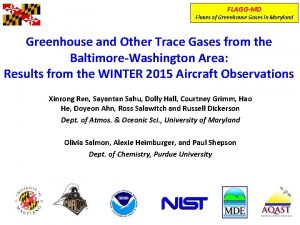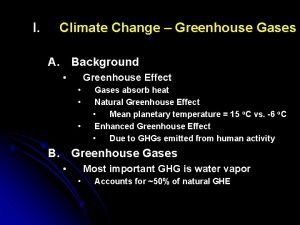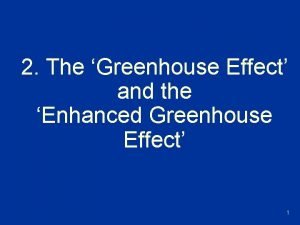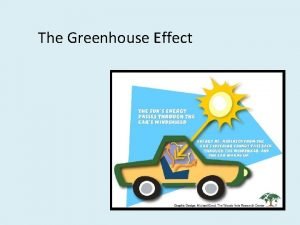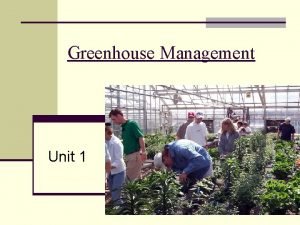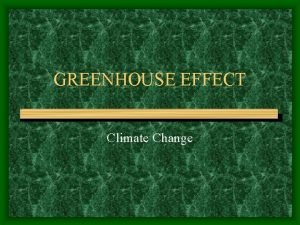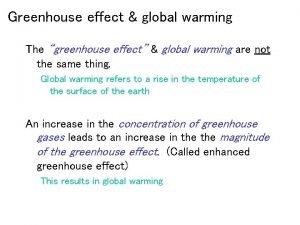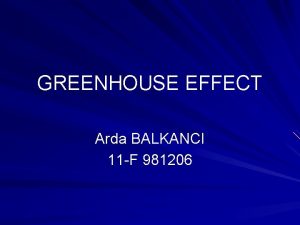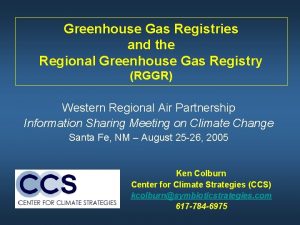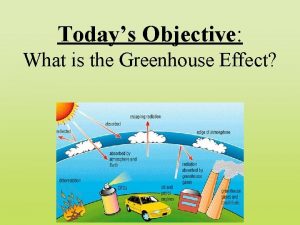Which of the following is not a greenhouse

























- Slides: 25

_____ Which of the following is not a greenhouse gas? a. methane (CH 4) b. water (H 2 O) c. oxygen (O 2) d. carbon dioxide (CO 2)

c _____ Which of the following is not a greenhouse gas? a. methane (CH 4) b. water (H 2 O) c. oxygen (O 2) d. carbon dioxide (CO 2)

c _____ Which of the following is not a greenhouse gas? a. methane (CH 4) b. water (H 2 O) c. oxygen (O 2) d. carbon dioxide (CO 2)

c _____ Which of the following is not a greenhouse gas? a. methane (CH 4) b. water (H 2 O) c. oxygen (O 2) d. carbon dioxide (CO 2)

c _____ Which of the following is not a greenhouse gas? a. methane (CH 4) b. water (H 2 O) c. oxygen (O 2) d. carbon dioxide (CO 2)

c _____ Which of the following is not a greenhouse gas? a. methane (CH 4) b. water (H 2 O) c. oxygen (O 2) d. carbon dioxide (CO 2)

c _____ Which of the following is not a greenhouse gas? a. methane (CH 4) b. water (H 2 O) c. oxygen (O 2) d. carbon dioxide (CO 2)

Fig. 2 -9, p. 36

_____ Which of the following gases has the most variable concentration in today's atmosphere? a. oxygen (O 2) b. nitrogen (N 2) c. water vapor (H 2 O) d. carbon dioxide (CO 2)

_____ Which of the following gases has the most variable concentration in today's atmosphere? a. oxygen (O 2) b. nitrogen (N 2) c. water vapor (H 2 O) d. carbon dioxide (CO 2)

c _____ Which of the following gases has the most variable concentration in today's atmosphere? a. oxygen (O 2) b. nitrogen (N 2) c. water vapor (H 2 O) d. carbon dioxide (CO 2)

_____ Which of the following would you expect to have the highest albedo? a. a body of water b. a forest c. snow d. the ground

c _____ Which of the following would you expect to have the highest albedo? a. a body of water b. a forest c. snow d. the ground

c _____ Which of the following would you expect to have the highest albedo? a. a body of water b. a forest c. snow d. the ground

d Which of the following would you expect to have the _____ highest albedo? a. a body of water Which of these is b. a forest the brightest? c. snow d. the ground

_____ Which of the following has the longest wavelength? a. X-rays b. infrared radiation c. visible light d. ultraviolet radiation

b Which of the following has the longest wavelength? _____ a. X-rays b. infrared radiation c. visible light d. ultraviolet radiation

b Which of the following has the longest wavelength? _____ a. X-rays b. infrared radiation c. visible light d. ultraviolet radiation

_____ An infrared photon contains more energy than an ultraviolet photon.

F _____ An infrared photon contains more energy than an ultraviolet photon.

_____ The Earth is closer to the sun in July than it is in January.

_____ The Earth is closer to the sun in July than it is in January.

F _____ The Earth is closer to the sun in July than it is in January.

Danielson, Fig. 3. 19

Sun Temp: 6000 K Earth Temp: 288 K Aguado, Fig. 2 -7
 Which of the following is not a greenhouse gas?
Which of the following is not a greenhouse gas? Vocabulary workshop level d unit 1
Vocabulary workshop level d unit 1 Why does carlson insist on shooting candy’s dog?
Why does carlson insist on shooting candy’s dog? Ability to use responsibility to override emotions
Ability to use responsibility to override emotions Riddles and proverbs
Riddles and proverbs Santosh patel life of pi
Santosh patel life of pi Example of axial movement in dance
Example of axial movement in dance Which of the following is not a fact finding technique
Which of the following is not a fact finding technique Tell whether or not is a sinusoid.
Tell whether or not is a sinusoid. Where can a variable be assigned values in pl/sql mcq
Where can a variable be assigned values in pl/sql mcq Classification of monophasic liquid dosage form
Classification of monophasic liquid dosage form What are the different market forms of poultry?
What are the different market forms of poultry? Which of the following is not an appraisal cost in sqa?
Which of the following is not an appraisal cost in sqa? Remove indirect left recursion
Remove indirect left recursion Java proficiency quiz 1
Java proficiency quiz 1 Biodiversity tends to decrease nearer the equator
Biodiversity tends to decrease nearer the equator Datamining functionalities
Datamining functionalities Marcom objectives
Marcom objectives Breeds of companion animals dogs
Breeds of companion animals dogs Which of the following defines employability?
Which of the following defines employability? Greenhouse inventory management software
Greenhouse inventory management software Is the greenhouse effect good or bad
Is the greenhouse effect good or bad Thank you
Thank you Why is the greenhouse effect important
Why is the greenhouse effect important Deborah greenhouse md
Deborah greenhouse md Yates city greenhouse
Yates city greenhouse
